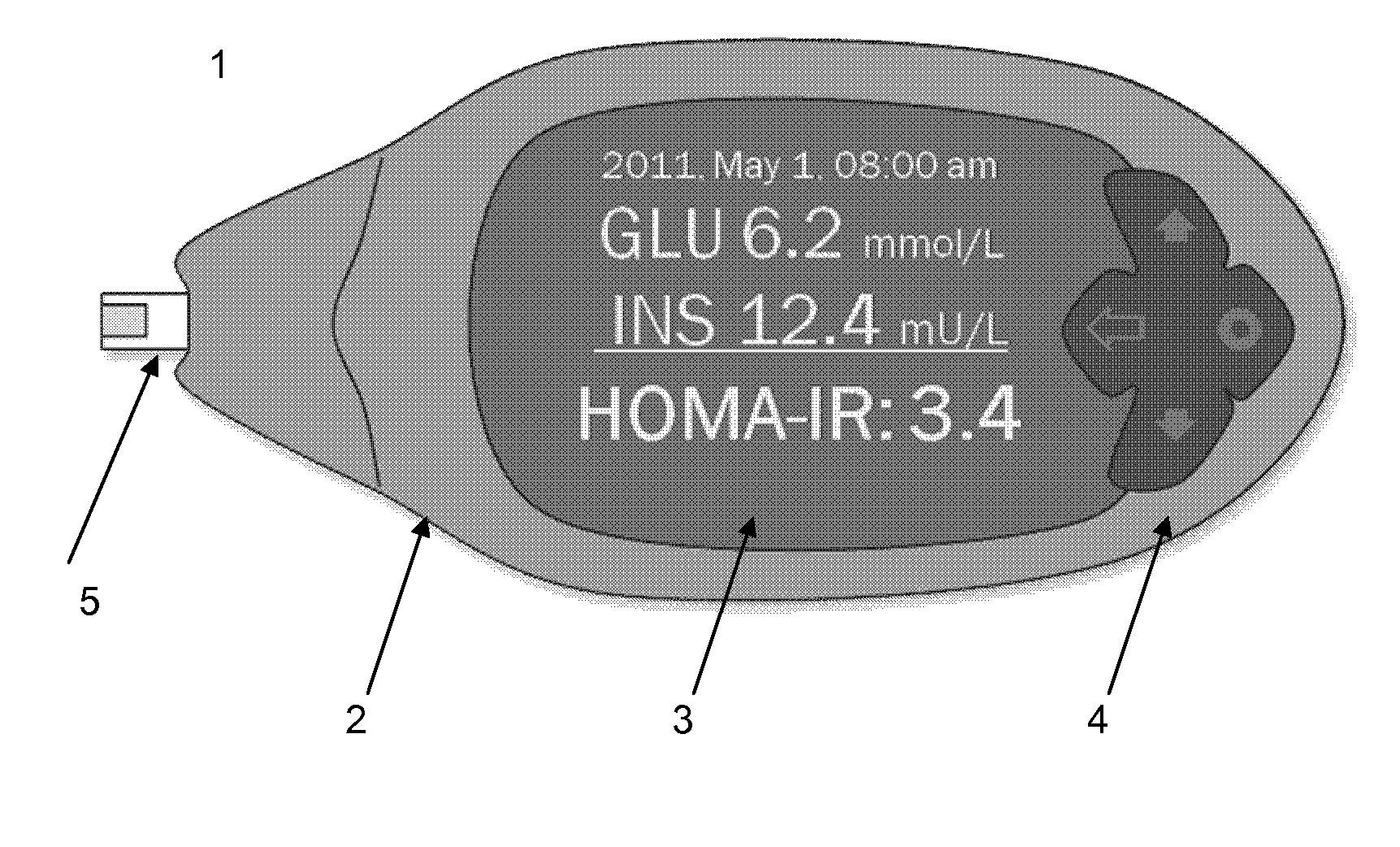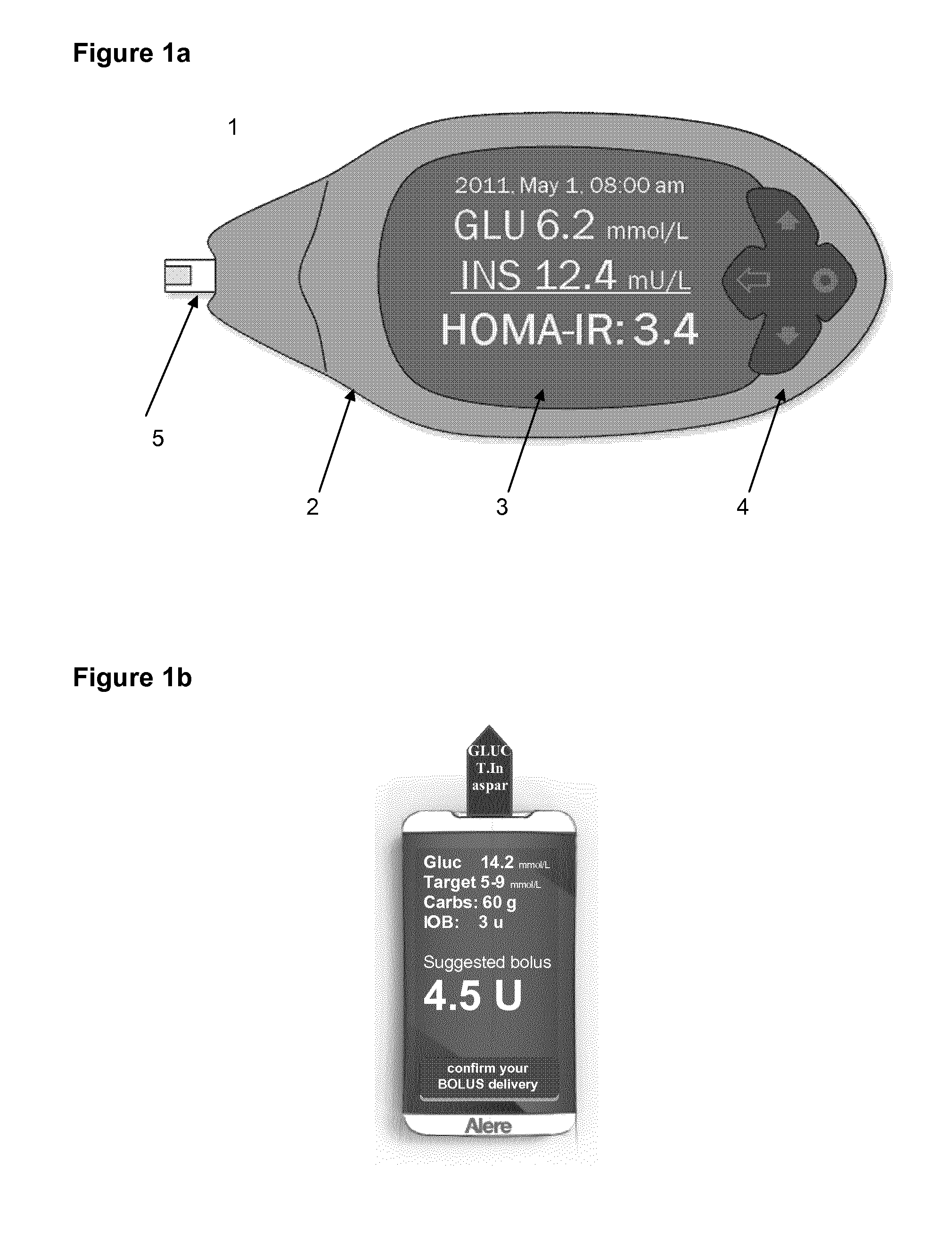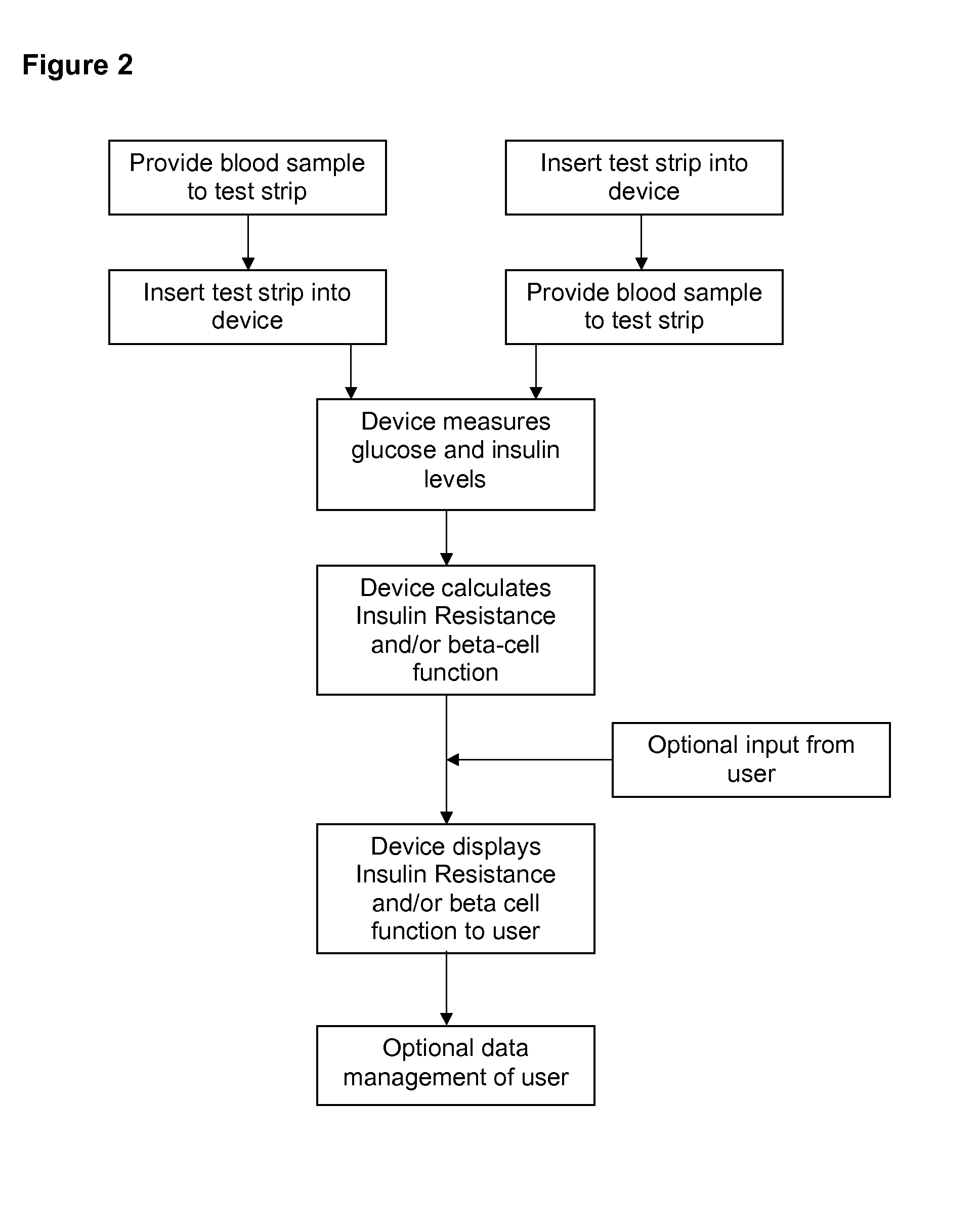Assay and method for determining insulin-resistance
a technology of insulin resistance and assay, applied in the field of medical diagnostics, can solve the problems of inaccurate assumptions, non-healthy or dangerous glucose and/or insulin levels, and inability to know when and where insulin sensitivity is needed, and achieves the effect of preventing type 2 diabetes mellitus and better preservation of -cell function
- Summary
- Abstract
- Description
- Claims
- Application Information
AI Technical Summary
Benefits of technology
Problems solved by technology
Method used
Image
Examples
example 1
Examples of Electrochemical Blood Glucose and Insulin Detection Test Strips
a) Blood-Glucose Detection Strip:
[0216]Screen printed working and reference electrodes are prepared on a disposable test strip which can receive a drop of blood. To the working electrode, an amount of glucose-oxidase is attached, in combination with an amount of electron-transfer mediator. The glucose in the blood sample brought onto the test strip is oxidized by the glucose-oxidase present on the working electrode, thereby releasing a proportional amount of electrons, transferred by the mediator to the reference electrode. The current measured between both electrodes is proportional to the amount of glucose in the blood sample.
b) Blood-Insulin Detection Strip:
[0217]In this example, insulin detection based on an electrochemical immunoassay detection system is described, wherein an insulin-specific antibody is labeled with a charged molecule or particle. Said antibody is present in the reaction zone of the tes...
example 2
Examples of Optical Blood Glucose and Insulin Detection Test Strips
[0230]Colorimetric Blood Glucose Test:
[0231]As an example, the test strip uses a colorimetric reaction following the formation of hydrogen peroxide by the glucose oxidase enzyme oxidizing glucose present in the blood. The test strip further encompasses a benzidine derivative, which is oxidized to form a blue-colour polymer by the hydrogen peroxide formed in the oxidation reaction. The amount of colored complex formed on the test strip is measured by trans-illuminating the test strip and detecting the amount of light transferred through the strip. The less light detected, the more complex formed and the higher the glucose concentration in the blood sample.
Colorimetric Blood Insulin Test:
[0232]In this example, the detection of insulin in the blood sample is based on pure immunological techniques, employing ELISA technology on a micro-scale in the reaction zone of the device, i.e. the microporous test strip, providing t...
example 3
Comparison of Calculation of Insulin-Resistance in a Type-1 Diabetes Mellitus Patient and the Use of it in Dosing the Insulin Bolus, Using Standard Formulas or Using the Device and Method According to the Invention
[0234]One of the ways to calculate Insulin resistance is by using the Homeostasis Model Assessment of Insulin Resistance (HOMA-IR). The method uses a fasting blood glucose and fasting blood insulin level. The formula is: fasting glucose level X fasting insulin level / 22.5. The formula has been widely used in population studies of normal, overweight and T2DM people but may also be beneficial in T1DM. However, since the biofeedback loop between insulin production and glucose is absent in type I diabetes, we may not use HOMA-IR in its original meaning. The product of insulin and glucose may however still give an idea of the Insulin resistance.
[0235]The type 1 diabetes mellitus patient has to inject a bolus of insulin prior to each meal. The bolus aims to 1) restore an elevated...
PUM
| Property | Measurement | Unit |
|---|---|---|
| volume | aaaaa | aaaaa |
| volume | aaaaa | aaaaa |
| volume | aaaaa | aaaaa |
Abstract
Description
Claims
Application Information
 Login to View More
Login to View More - R&D
- Intellectual Property
- Life Sciences
- Materials
- Tech Scout
- Unparalleled Data Quality
- Higher Quality Content
- 60% Fewer Hallucinations
Browse by: Latest US Patents, China's latest patents, Technical Efficacy Thesaurus, Application Domain, Technology Topic, Popular Technical Reports.
© 2025 PatSnap. All rights reserved.Legal|Privacy policy|Modern Slavery Act Transparency Statement|Sitemap|About US| Contact US: help@patsnap.com



